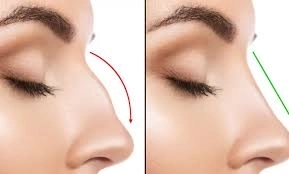
Does Rhinoplasty Affect Breathing? Expert Insight from Prof. Mabrouk Abdel Khalek
Published on: 2025-06-25 | Written by: Professor Mabrouk Abdel Khaleq PhD Otorhinolaryngology
Prof. Mabrouk Abdel Khalek, PhD in Otolaryngology (ENT), is a pioneer in functional and cosmetic nasal surgery. He emphasizes that rhinoplasty isn’t just about aesthetics—it can also impact breathing function if not performed with proper anatomical understanding and surgical precision.
When Can Rhinoplasty Affect Breathing?
Prof. Mabrouk Abdel Khalek explains that improper surgical techniques—such as over-reduction of nasal structures or narrowing of the nasal valve—can lead to post-operative breathing issues. That’s why careful preoperative planning is crucial.
Functional vs. Traditional Rhinoplasty
According to Prof. Mabrouk Abdel Khalek, rhinoplasty can be categorized as:
-
Traditional Rhinoplasty: Focuses purely on cosmetic appearance.
-
Functional Rhinoplasty: Combines aesthetic improvement with the preservation or enhancement of nasal airflow.
The best outcomes are achieved when both aspects are balanced. This is the core principle in the surgeries performed by Prof. Mabrouk Abdel Khalek, who uses advanced 3D technologies for planning.
How to Prevent Breathing Issues After Rhinoplasty
Prof. Mabrouk Abdel Khalek highlights several important steps to minimize the risk of nasal obstruction:
-
Preoperative assessment of the nasal septum and airways
-
CT imaging in cases of chronic nasal blockage
-
Custom surgical planning with 3D simulation
-
Post-operative follow-up to monitor nasal airflow
Can Breathing Problems Be Corrected After a Previous Rhinoplasty?
Yes. Prof. Mabrouk Abdel Khalek confirms that revision surgery can be performed to restore breathing function. This may involve cartilage grafting or realignment of the septum to open the airway again.

